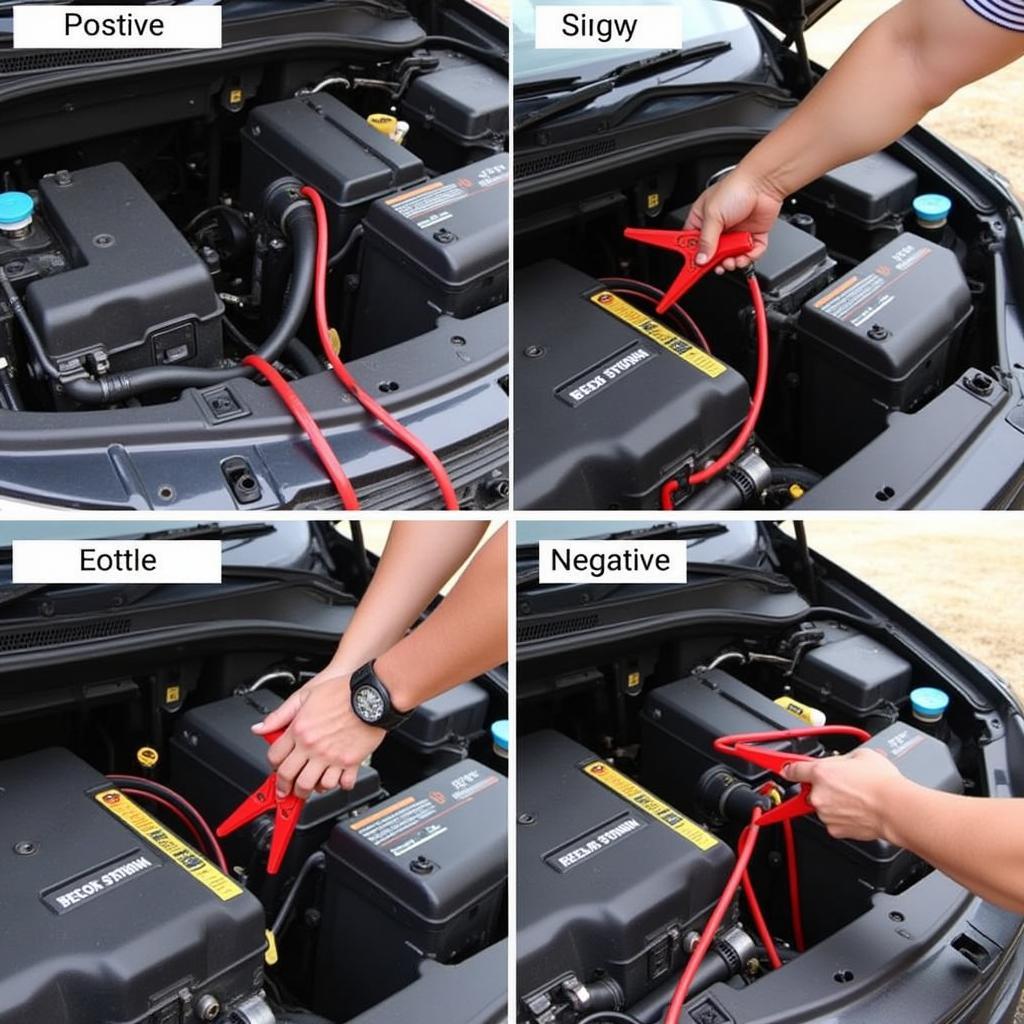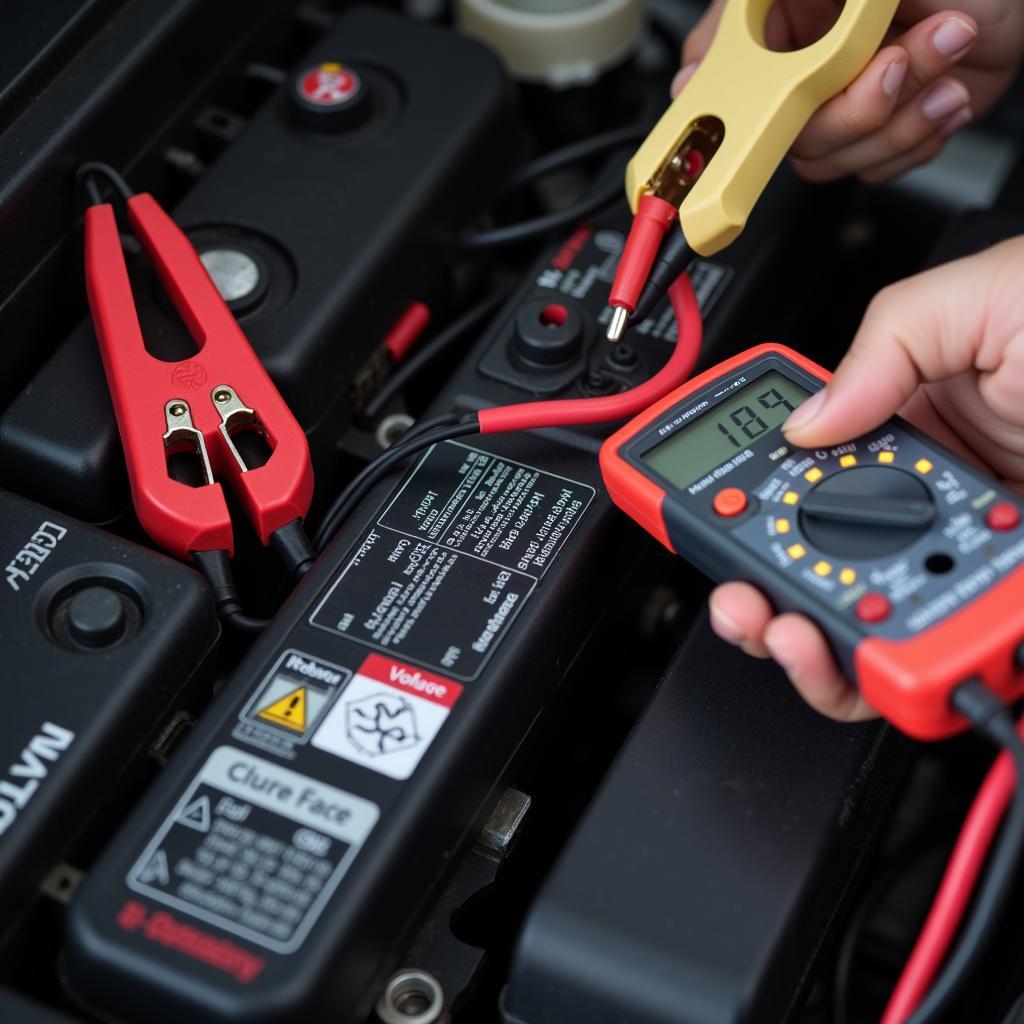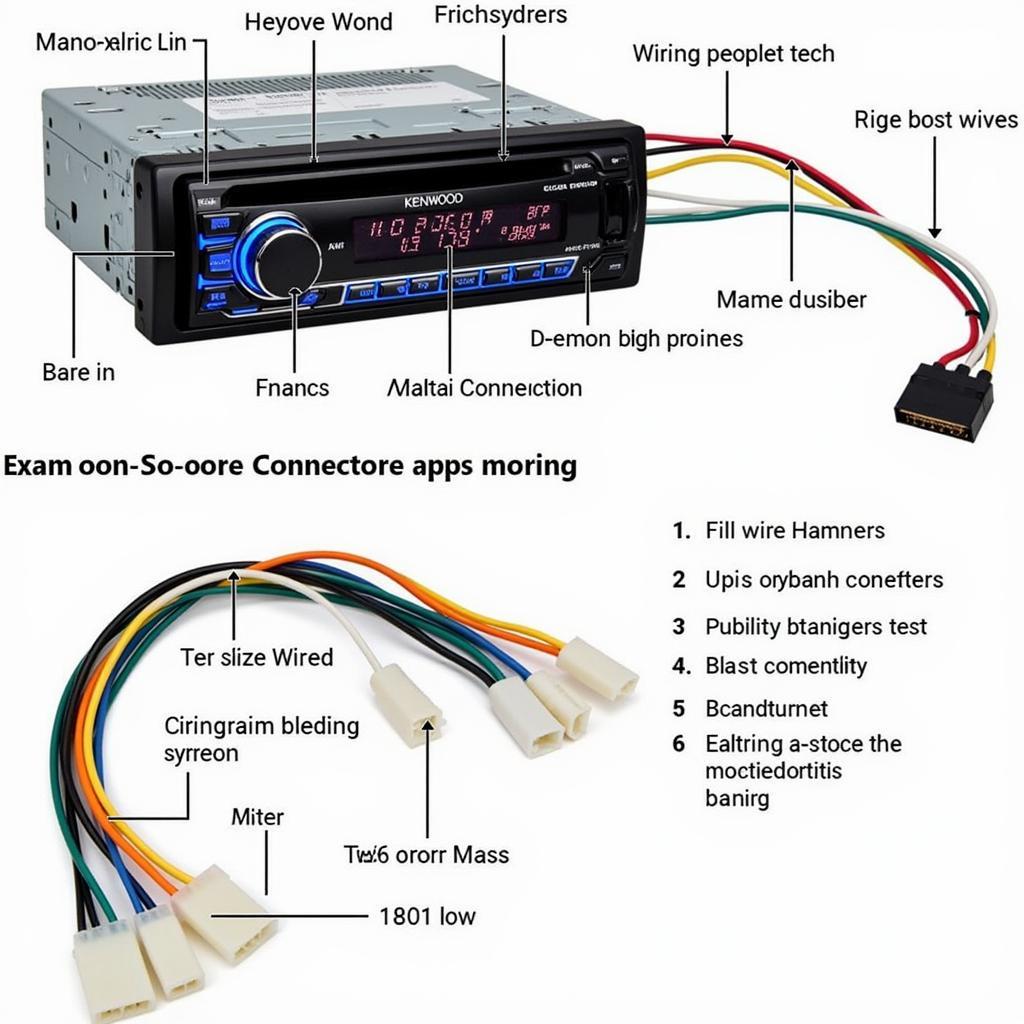Is your car struggling to start? A common dilemma for car owners is distinguishing between a bad battery and a bad starter. Both can lead to a non-starting vehicle, but understanding the key differences is crucial for accurate diagnosis and repair. This article will provide you with the knowledge and tools to pinpoint the source of your starting problem, empowering you to get back on the road quickly.
Identifying the Culprit: Is It Your Battery or Starter?
A dead battery or a faulty starter can leave you stranded. Let’s explore the symptoms of each to help you differentiate between them.
Symptoms of a Bad Battery
- Dim headlights: If your headlights appear unusually dim, especially when the engine is off, it could indicate a weakened battery.
- Slow engine crank: When you turn the key, the engine cranks slowly or struggles to turn over.
- Clicking sound: A rapid clicking sound when you try to start the car often points to a low battery charge.
- Electrical issues: Problems with the radio, interior lights, or power windows can also be attributed to a failing battery.
- Old battery age: Batteries typically last 3-5 years. If your battery is older, it’s a prime suspect.
Symptoms of a Bad Starter
- Single click or no sound: When you turn the key, you hear a single click or nothing at all.
- Engine doesn’t crank: Despite a charged battery, the engine doesn’t rotate.
- Smoke from the starter: In some cases, a failing starter may emit smoke or a burning smell.
- Freewheeling: The starter motor runs but doesn’t engage the engine.
- Intermittent starting issues: The car sometimes starts perfectly, while other times it struggles or refuses to start.
Performing Simple Tests to Narrow Down the Cause
Before jumping to conclusions, performing some simple tests can help you pinpoint the problem.
The Headlight Test
Turn on your headlights. If they are bright, then your battery likely has sufficient charge. If they are dim or flicker, the battery is likely the issue.
The Starter Test (with Caution)
If you have a helper, have them turn the key while you gently tap on the starter with a hammer or wrench. If the car starts, the starter is likely the culprit. Note: Be extremely cautious when performing this test to avoid injury.
Jump Starting Your Car
If the car jump-starts easily, it further suggests a bad battery. If it still doesn’t start, the starter might be the problem. Check out resources on [bad battery or alternator] for more related information.
 Jump Starting Car with Bad Battery
Jump Starting Car with Bad Battery
Advanced Diagnostics and Solutions
For a more definitive diagnosis, you can use a multimeter to test the battery voltage and the starter’s current draw. If you’re not comfortable performing these tests, it’s best to consult a professional. You might find articles discussing [signs of bad battery vs alternator] helpful.
Remote Diagnostics and Programming
With advancements in automotive technology, remote diagnostics and programming are becoming increasingly prevalent. Specialized technicians can remotely access your car’s computer system to diagnose issues and even install software updates to fix certain problems. This can be a convenient and cost-effective solution, especially for software-related issues.
“Remote diagnostics has revolutionized how we troubleshoot car problems,” says automotive electrical engineer, Dr. Susan Miller. “It allows us to quickly and accurately diagnose complex issues without the need for a physical inspection in many cases.”
Prevention and Maintenance Tips
Maintaining a healthy battery and starter can prevent future headaches.
- Regularly clean your battery terminals.
- Have your battery tested annually.
- Avoid short trips that don’t allow the battery to fully recharge.
- Address any electrical issues promptly.
“Regular maintenance is key to prolonging the lifespan of your car’s electrical components,” adds Michael Carter, a certified automotive technician. “Simple steps like cleaning battery terminals can make a big difference.”
 Testing Battery Voltage with Multimeter
Testing Battery Voltage with Multimeter
Conclusion
Understanding the difference between a bad battery and a bad starter is essential for effectively troubleshooting car starting problems. By observing the symptoms, performing simple tests, and seeking professional help when needed, you can quickly resolve these issues and get back on the road. Don’t forget to explore resources like information on [signs of bad battery or alternator] to further enhance your understanding. A well-maintained battery and starter are crucial for reliable car operation.
FAQ
-
How long does a car starter typically last?
Car starters typically last between 5 and 10 years, depending on usage and maintenance. -
Can a bad alternator cause starting problems?
Yes, a faulty alternator can prevent the battery from charging properly, leading to starting issues. -
Can I replace a car battery or starter myself?
While possible, replacing these components can require some mechanical knowledge. If you’re unsure, it’s best to consult a professional. -
How much does it cost to replace a car battery or starter?
The cost varies depending on the make and model of your car but generally ranges from $100 to $400 for a battery and $200 to $800 for a starter, including labor. -
How can I prevent my car battery from dying prematurely?
Avoid leaving accessories on when the engine is off, ensure your alternator is functioning correctly, and have your battery tested regularly. -
What should I do if my car doesn’t start after replacing the battery or starter?
Double-check all connections and ensure the new components are properly installed. If the problem persists, seek professional assistance. -
Are there any warning signs of a failing starter?
Yes, some common warning signs include slow cranking, grinding noises, and intermittent starting issues.


